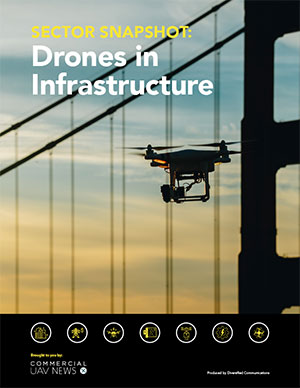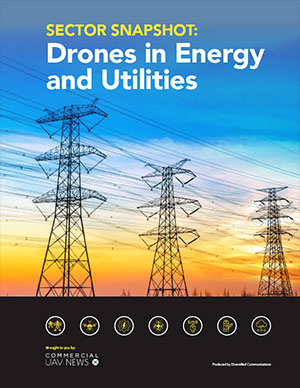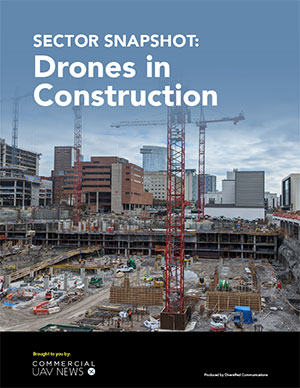There was no shortage of topics to discuss at this year’s Commercial UAV Expo. With a melting pot of backgrounds and experience levels in attendance, the Roundtable Discussion sessions served as a place for these conversations to come to life and for attendees to connect with their peers.
While the seven sessions were dedicated to specific topics, there were undeniable themes across the board that came up in every conversation. To capture these insights, we gathered the perspectives of the discussion leaders from the roundtable sessions that highlight the challenges, opportunities, and advice shaping the drone industry.
How Does the NPRM Affect Individual Operators?
The release of the Part 108 NPRM and what it means for individuals and large organizations was discussed at length during sessions throughout the show. In a roundtable session dedicated to the regulation, attendees expressed concerns about how the proposed rule appears to be in favor of large organizations rather than small or independent operators.
“The attendees I spoke to work at small land surveying firms, and they are licensed in just a few adjacent states with a maximum of six jurisdictions per company. They all agreed with the perception that the NPRM for Part 108 was heavily influenced by lobbying of large delivery companies and will harm the ‘small guy’ ” stated Juan Plaza, CEO of Plaza Aerospace Corp.
Another consensus from attendees was that getting a Part 108 certification under the proposed rule would not be worth the trouble for them.
“Many operators concurred that they would continue operating under Part 107 and not make the shift to Part 108 operations as currently written,” explained Josh Olds, president, CEO and Co-Founder of Unmanned Safety Institute.
One topic that came up in the same session, and one that may not be getting proper attention is that of the proposed Part 146 within the NPRM. This rule addresses the digital infrastructure that will support BVLOS operations of the future such as data delivery, deconfliction, and flight monitoring platforms.
“This rule is significant because it creates opportunities for companies interested in providing the services this Part would regulate,” said Zaida McGhee, founding partner and author at Angulo McGhee APC.
“Part 146 would apply to Automated Data Service Providers (ADSP’s) and the services they offer for BVLOS flights. The rules in this Part would govern certification, authorizations, performance standards, and oversight. The FAA would certify providers, authorize specific services (e.g. detect-and-avoid, traffic management, weather integration), set performance and safety standards (e.g. data reliability, quality, cybersecurity,) and enable BVLOS operations by ensuring the digital services are reliable,” explained McGhee.
How to Prepare the Workforce for Future Operations
The drone industry is advancing quickly, and it’s imperative that its workforce remains ahead of the curve by training for the problems and operations of tomorrow. There were many conversations around how to train the next generation of drone operators, with focus on skills-based learning opportunities. As for current operators, it was clear that training programs need to be adaptable to the ever-changing needs of the industry.
“To keep pace with evolving technologies such as BVLOS, AI, and autonomy, workforce development must be dynamic and adaptable. Training and education programs should build flexibility into their curricula, updating content as new tools, regulations, and applications emerge,” said Nikolas Macchiarella, professor at Embry-Riddle Aeronautical University.
A key challenge right now is identifying the right tools to safely train pilots for BVLOS flights, with one discussion leader predicting the industry will adopt models similar to those used by commercial airline pilots.
“The gap between individual operators and full-scale commercial BVLOS operations has never been wider. The NPRM highlights this divergence clearly,” said Paul Rossi, director of development and safety at Causey Aviation Unmanned. “I believe the pathway to validating safe many-to-one BVLOS operations will rely heavily on advanced simulators. These simulators will not only be central to operational validation but will also form the foundation of future BVLOS training and pilot qualification programs.”
In the long term, it will be important for the drone industry to foster relationships with educational institutions to ensure that the workforce of the future is on the right track.
“Strong partnerships between industry, academia, and government will be essential for monitoring technological trends and aligning training with real-world needs,” stated Macchiarella.
How Operators Win Support and Grow Their Business
One benefit of the roundtable discussions was the opportunity to get advice from seasoned operators in the industry. Everyone wants to grow in their field, and our discussion leaders shared what has helped them get to where they are today. Overall, it was agreed upon that advocating for yourself and the value that your work brings can go a long way.
“Everyone across all sectors had the same thoughts on the importance of ‘showing the wins’ when it comes to getting higher ups in your agency to further adopt drones because they see the constant benefit. We need to be better about monetizing how drones can save money because that's the best way to get buy-in,” shared Garrett Hultgren, sergeant at Longmont Police Department.
For those who are their own manager, advocating for yourself may mean getting out of your comfort zone by expanding into new regions, or getting active on social media to promote your business.
“Don’t be afraid to look for work beyond your local area of operations. Also, make your voice heard on social media and utilize AI to help organize and prepare those posts,” said Robert Hart, owner of LIDAR Drone Services.















Comments